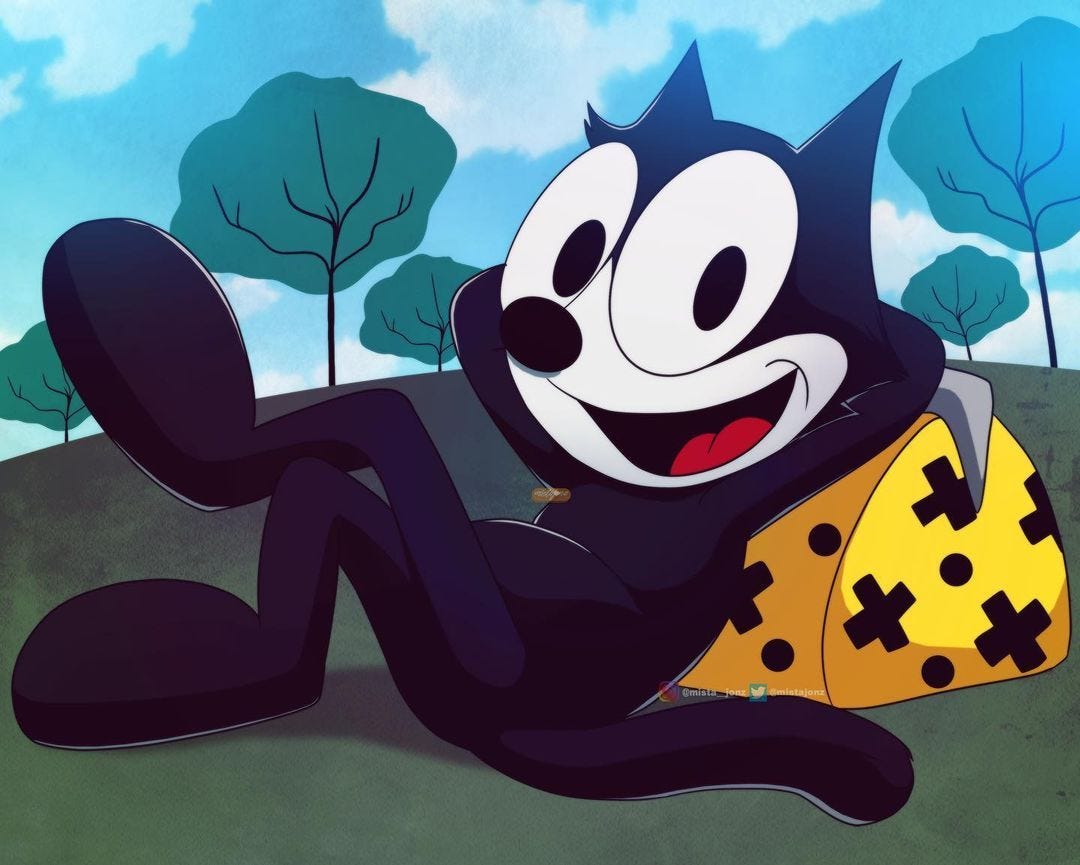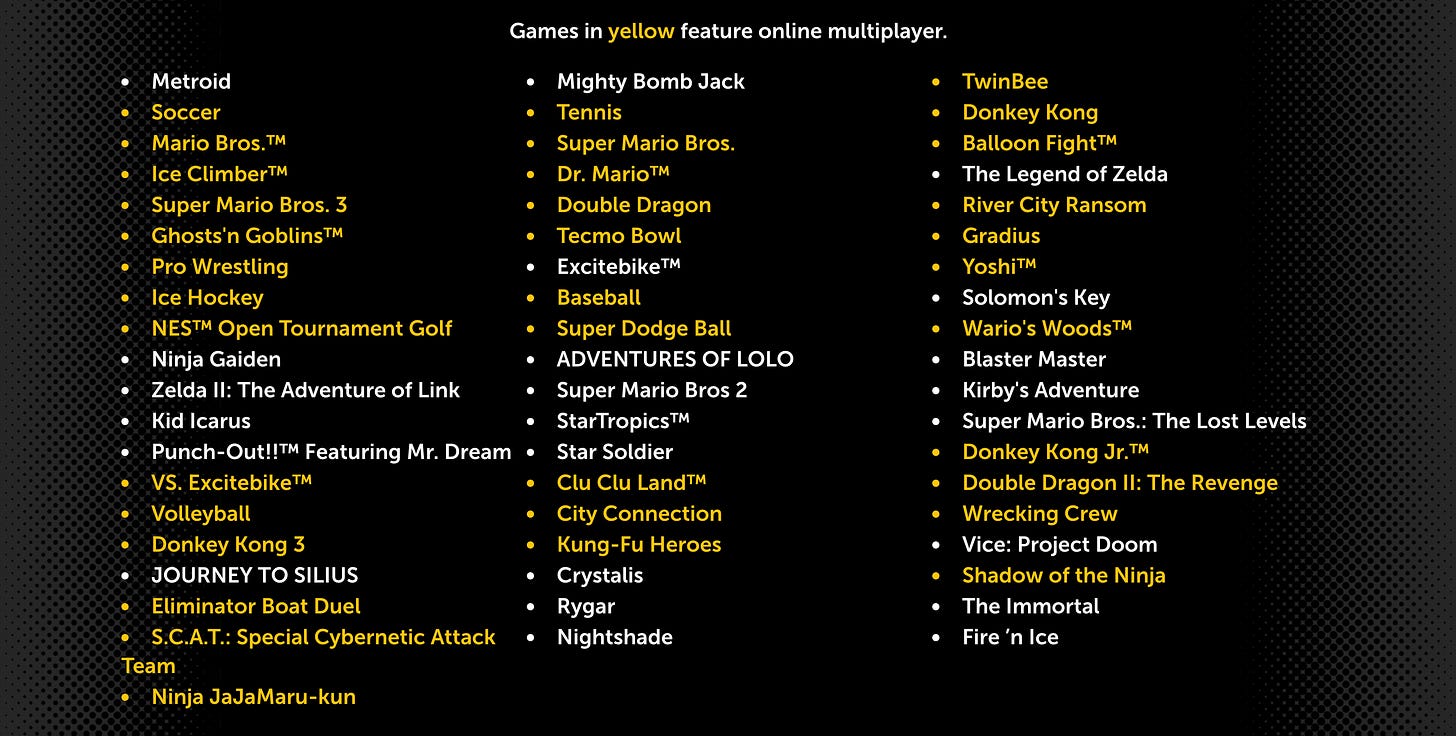The Consensus Top 100 Underrated Nintendo Entertainment System (NES) Games of All Time
Now that you can use an emulator to play the 800+ NES games on your phone, which titles that were overlooked in the eighties and nineties are most worthy of your time? More than 100 experts weigh in.
Introduction
Nintendo—by which I mean the original Nintendo Entertainment System from the mid-1980s—is having a renaissance that no one could’ve anticipated. Always a focus of niche video game collectors, the third-most-acclaimed gaming console of all time is now something you would never expect a thirty-plus year-old piece of hardware to be: a platform for new discoveries. Nintendo lovers are making “homebrew” NES games (see, e.g., here, here, and here) that are almost as good as original NES releases, and they’re putting them in boxes and in cartridges that are identical to those you might have found in the eighties—meaning that anyone who wants to discover “new” NES games in 2021 can do so. Just so, archival “finds” have made previously unavailable NES games from the eighties available as “ROMs” playable on your cell phone (see, e.g., the video below). And speaking of phones, the entire Nintendo library is now at your fingertips—literally—if you download the NES.emu emulator to your cell and use EmulatorGames.net or RomHustler.org to download any of the nearly 1,000 NES and FamiCom (Japanese Family Computer, the NES precursor) ROMs now available.
Even as the universe of known NES games has expanded, with emulators now making possible the playing of Europe- and Japan-only NES games from the eighties—many of which are as good as the best NES games released in America—Nintendo (and here I mean the company) has made not just the most well-known NES games available for the Nintendo Switch but a whole host of “new classics” like Eliminator Boat Duel, Journey to Silius, Kung Fu Heroes, Fire n’ Ice (sequel to Solomon’s Key), Nightshade, S.C.A.T. (Secure Cybernetic Attack Team), City Connection and Shadow of the Ninja.
Perhaps not surprisingly, RETRO takes an even more radical view of this NES revival than anything you see above, with this publication being of the opinion that (a) the best U.S.-released NES games remained largely unplayed in the United States in the 1980s because they were overshadowed by a small number of (in many instances over-rated) lucrative franchises; (b) some of the best third-generation video games weren’t released in America at all, and are now absolutely essential gaming experiences that can be readily found via any emulator that plays Europe- and Japan-only (“PAL” and “JP” as opposed to “NTSC”) NES games; and (c) if the current homebrew NES scene continues in its current trajectory, and if the current push to unearth archival finds (unreleased NES games from the 1980s) continues in its present trajectory, we’ll soon find ourselves saying that the best NES games weren’t released in the 1980s or 1990s at all—but the 2020s. We can see the beginning of this trend in the NES homebrew Witch n’ Wiz (see video below), which is available here and is as awesome as anything released for the Nintendo Entertainment System three decades ago.
At a time when nostalgia can be bracing rather than enervating—at a time when retro experiences allow us to make fresh and intensely personal what once seemed distant and communal—gamers have an opportunity to not just rediscover the joys of 8-bit gaming during an era in which many of us feel cooped up and despairing, but to seek a novel sense of the NES game library that includes a bevy of new classics worthy of mention in the same breath as the excellent Super Mario, Castlevania, and Mega Man titles (as well as the slightly overrated Ninja Gaiden, Contra, and Double Dragon ones).
Defining the “New NES Classics”
In celebrating a new era of NES-playing, it simply wouldn’t do to treat NES games that were bestsellers in the 1980s and 1990s as “surprise hits”; or to rehash the praise for games that have been praised by basically everyone for decades; or to limit any analysis to games released in America last century (especially not when translated ROMs make non-NTSC games available for anyone to play now); or even to disqualify games that were “too hard” (or as was said at the time, “Nintendo hard”) when they were released, but become eminently playable using emulators that offer infinite “save states.” And of course no game could ever become a “new classic” just by the say-so of a single professional video game critic, whether it’s me here at RETRO or anyone else. Only a massive curation of data and expert opinion gives us a plausible glimpse of the “new classics” of the NES.
RETRO already tried to aid in this work for PAL and JP games, publishing last month “The Definitive Top 100: Best Nintendo Entertainment System (NES) Games Never Released in America” (link), which established as among a class of “new NES classics” such emulator-ready no-NTSC-release games as Mr. Gimmick, Ufouria: The Saga, Crisis Force, Over Horizon, Recca, Three-Eyed Boy, Moon Crystal, Sweet Home, Mother, Chronicles of the Radia War, Just Breed, Holy Diver, Joy Mech Fight, Kid Dracula, Lagrange Point, Parodius, Samurai Pizza Cats, Banana Prince, Hammerin’ Harry, Noah’s Ark, Rod Land, Splatterhouse: Wanpaku Graffiti, and Super Turrican. These games should be mentioned in the same breath—by gamers, critics, collectors, investors, speculators, journalists, and historians—as games NES lovers already know and adore. More than this, they should be played by anyone who cares about gaming.
By the same token, RETRO has published sufficient information on homebrew and archival NES games to advance the notion that Bio Force Ape, Time Diver: Eon Man, Witch n’ Wiz, Blade Buster, Micro Mages, and Battle Kid: Fortress of Peril deserve serious consideration in any discussion of “new classics” for the original Nintendo.
But beyond these three categories of new classics—those identified by the Nintendo corporation itself; those evident from experts’ assessments of PAL- and JP-only NES releases; and those heralded from among the growing crop of NES homebrews and archival finds—lies a bigger question: “Which NTSC NES games that didn’t sell well in the 1980s or 1990s, or get much critical attention, were unjustly ignored by video game journalists and gamers alike? And how would we make a list of such games?”
Well, where there’s a will, curatorial journalism finds a way.
The ranking below conclusively establishes the largest and most important category of new classics for the NES—games that could’ve and should’ve achieved greatness at the time they were released in America last century—and it does so by removing all bestsellers, all consensus critical darlings, all non-US releases, and all homebrews and archival finds, and then asking, “Which NES games do 100+ retro gaming experts still consider underrated?” The ranking then goes even one step farther than this, putting an asterisk next to any game so obscure that it doesn’t even appear anywhere from #101 to #200 on the Consensus Top 100 Nintendo Entertainment System Games (a ranking that includes 200 games in total, so readers can see which games “bubbled under” the Top 100, as the Billboard chart-makers used to say of sixties pop songs).
All of the games toward the top of the list below should be considered “lost classics”, while those that also have an asterisk beside them stand a good chance of becoming—even if they’re already known to avid gamers and top critics—“new classics” in this era of rediscovery. In the months and years ahead, RETRO will highlight certain of these games to explain why they deserve to be held in the same sort of regard Super Mario, Mega Man, Castlevania, Ninja Gaiden, Contra, and Double Dragon games are.
The Top 25 Underrated NES Games
(with number of votes from industry outlets and experts in parentheses, and an asterisk after any game that not only does not appear in the Consensus Top 100 Nintendo Entertainment System Games, but does not even appear in the #101 to #200 spots in that curation of data)




